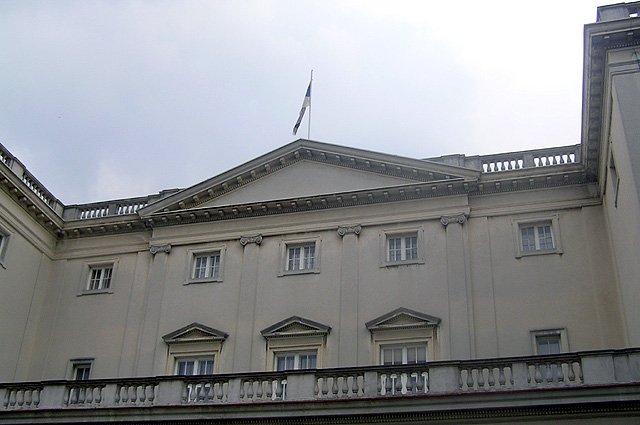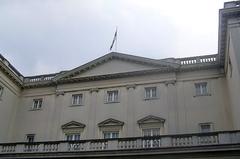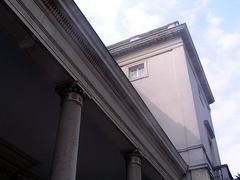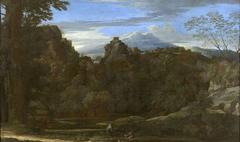
Beli Dvor (White Palace) Visiting Hours, Tickets, and Guide to Belgrade Historical Sites
Date: 14/06/2025
Introduction
Beli Dvor, or the White Palace, is an emblem of Serbia’s royal heritage and stands as one of Belgrade’s most distinguished historical sites. Nestled in the elite Dedinje neighborhood, this neoclassical masterpiece seamlessly blends royal tradition, European architectural elegance, and a rich tapestry of Serbian 20th-century history. Whether you’re a history enthusiast, an architecture aficionado, or a traveler seeking to explore the cultural heart of Belgrade, Beli Dvor offers a unique window into the royal legacy and evolving national identity of Serbia.
Table of Contents
- Origins and Construction
- Architectural and Artistic Significance
- The Royal Compound and Gardens
- Historical Evolution and Modern Role
- Visiting Beli Dvor: Hours, Tickets, and Accessibility
- Visitor Experience and Travel Tips
- FAQ
- Conclusion
- Sources and Further Reading
Origins and Construction
Commissioned in the 1930s by King Alexander I of Yugoslavia, Beli Dvor was designed as a residence for his sons—Peter, Tomislav, and Andrej. The palace’s construction began in 1934 and was completed in 1937 under the direction of the renowned Serbian architect Aleksandar Đorđević. Influenced by both neoclassical and Neo-Palladian styles, the design drew inspiration from grand English country houses, particularly Ditchley Park, reflecting the Yugoslav monarchy’s aspirations for dignity and unity (Wikipedia: Dedinje Royal Compound; Dvorci Srbije).
Architectural and Artistic Significance
Beli Dvor’s façade, constructed from pristine white stone, exudes stately elegance and purity. The interiors were curated by the esteemed French firm Maison Jansen, renowned for blending English Georgian and 19th-century Russian styles. Highlights include:
- Grand ceremonial hall: The palace’s heart, perfect for official gatherings.
- Lavish salons: Furnished in Louis XV and Louis XVI styles, adorned with Venetian chandeliers and intricate woodwork.
- Formal dining room: Featuring Chippendale-style furniture and a Sèvres porcelain cabinet.
- Art collection: Works by Canaletto, Rembrandt, Poussin, Brueghel, Veronese, and renowned Serbian artists such as Paja Jovanović and Vlaho Bukovac.
- Library: Once held approximately 35,000 volumes, reflecting the royal family’s intellectual pursuits (Serbia.com; Belgrade Beat).
The Royal Compound and Gardens
Beli Dvor is part of the expansive Dedinje Royal Compound, which covers about 100 hectares and includes the Royal Palace, the Royal Chapel, and beautifully landscaped gardens. The palace itself is surrounded by 12 hectares of gardens designed by British horticulturalist Thomas Mawson. The landscape features:
- Symmetrical lawns, pergolas, and terraces.
- Panoramic views of Dedinje, Košutnjak Forest, Topčider, and Avala.
- Walking paths lined with exotic plants, fountains, and secluded pavilions (Dvorci Srbije; Royal Family).
Historical Evolution and Modern Role
The palace’s history mirrors the dramatic shifts in Serbia throughout the 20th century. After King Alexander’s assassination, Prince Regent Paul completed the palace. During WWII, the royal family was exiled and the palace was nationalized by the communist government, later serving for state functions under leaders such as Josip Broz Tito and Slobodan Milošević.
Since the early 2000s, Crown Prince Alexander and his family have returned, using Beli Dvor for cultural, diplomatic, and humanitarian events. It now stands as both a living royal residence and a public monument to Serbia’s royal past (Tourist Organization of Belgrade; Royal Family).
Visiting Beli Dvor: Hours, Tickets, and Accessibility
Visiting Hours and Booking
- Regular public tours: Every Saturday at 9:30 AM (Serbian) and 12:30 PM (English).
- Season: Tours are available from April through November.
- Group visits: Weekday tours (Monday–Friday, 9:00–15:00) for groups (schools, associations) by reservation 7–10 days in advance.
Tickets
- Price: 1,500 RSD per adult (as of June 2025), with discounts for students, seniors, and groups.
- Booking: Advance reservation required via the Tourist Information Centre (Knez Mihailova 56), by phone (+381 11 26 35 622), or email (www.tob.rs).
- Entry: Access to the Royal Compound is only via organized transport; private vehicles are not permitted.
Guided Tours
- Languages: Serbian and English (other languages available for larger groups).
- Duration: Approximately 90 to 120 minutes.
- Itinerary: Includes the White Palace, Royal Palace, Royal Chapel, gardens, and select interiors.
- Photography: Permitted in gardens and some interiors; restrictions apply in certain rooms.
Accessibility
- Facilities: Partial accessibility for visitors with mobility challenges; some areas may be difficult to access due to historic architecture.
- Restrooms: Available on site.
Visitor Experience and Travel Tips
- Dress code: Modest attire recommended due to the palace’s status as an active royal residence.
- Nearby attractions: Royal Palace, Museum of Yugoslavia, Tito’s Mausoleum, Košutnjak Forest, Topčider Park.
- Facilities: No cafes or restaurants inside the compound; plan meals accordingly.
- Booking tip: Tours are popular and group sizes are limited, especially during peak months. Book in advance.
FAQ
Q: What are the official Beli Dvor visiting hours?
A: Guided tours are every Saturday at 9:30 AM (Serbian) and 12:30 PM (English). Group tours on weekdays require advance booking.
Q: How do I purchase tickets?
A: Through the Tourist Organization of Belgrade, at Knez Mihailova 56, or by contacting the Office of the Crown Prince for group bookings.
Q: Is photography allowed?
A: Yes, in the gardens and certain interior areas. Restrictions may apply in select rooms or during special events.
Q: Is Beli Dvor accessible to visitors with disabilities?
A: The palace offers partial accessibility. Some areas may be challenging; contact the Tourist Organization for details.
Q: Can I visit Beli Dvor without a guided tour?
A: No, all visits must be through organized tours to protect the palace’s heritage and ensure security.
Conclusion
Beli Dvor (White Palace) stands as a stunning testament to Serbia’s royal past, architectural artistry, and cultural resilience. Its opulent interiors, world-class art collections, and serene gardens offer an immersive experience that bridges history with living tradition. Whether you’re captivated by European palaces, Serbian history, or art, a visit to Beli Dvor is an essential addition to your Belgrade itinerary.
For the latest updates, ticket information, and personalized travel planning, use the Audiala mobile app or consult official tourism websites. Respect the palace’s protocols, book your visit early, and consider exploring nearby attractions for a complete cultural journey through Belgrade.
Sources and Further Reading
- Wikipedia: Dedinje Royal Compound
- Belgrade Beat: White Palace
- Serbia.com: Beli Dvor - Uncovering the Story Behind Belgrade’s White Palace
- VisitBelgrade.eu: White Palace
- Dvorci Srbije: Beli Dvor
- Tourist Organization of Belgrade: Dedinje Royal Compound
- Royal Family of Serbia: Palaces Visits










































































